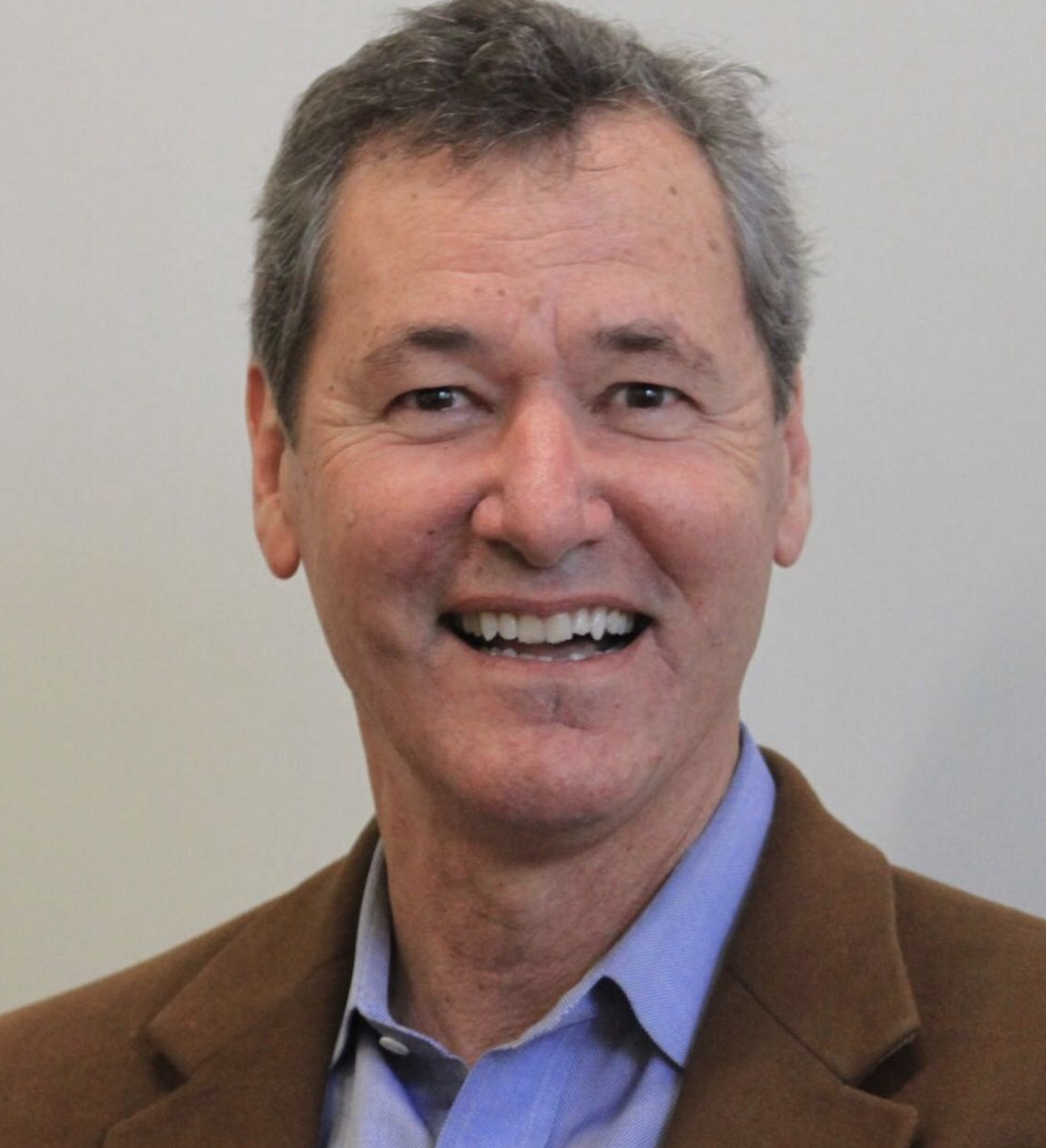
Vassilisa Rubtsova: Hello. Thank you for meeting with me for this interview.
Professor David Roland-Holst: Happy to speak with you.
VR: Before we dive into the interview, could you give me an overview of the work and research you’ve done?
DRH: I teach economics here at UC Berkeley and also got my PhD here. I’ve been on the faculty since 2000, and my main areas of research are economic development and environmental economics. Since getting my degree in 1985, I have worked in over 40 countries, published 5 books and over 100 professional articles and book chapters. My main areas of interest now are climate policy in China and California, two leading theaters of policy innovation. In the larger context of development and climate change, I work primarily in China, Southeast Asia, and Central Asia. Those are the regions I have studied for most of my career but I also did work in Africa and Latin America. My work with California began about 15 years ago with the legislative run-up to the state’s path breaking climate initiative AB32.
VR: Clearly you have done a lot of work with sustainable development. Currently developed countries reached their developed status through the indiscriminate use of fossil fuels, are sustainable rates of development in currently developing countries competitive with rates of development through traditional means of development through the use of fossil fuels?
DRH: The simple fact is that fossil fuel use is relatively inexpensive if you do not account for the social cost of carbon. That makes it irresistible as a tool for promoting development. The prosperity we enjoy in the high-income countries today is completely based on the Industrial Revolution. At that time, we domesticated carbon fuels and this allowed us to develop technologies and achieve living standards beyond the imagining of our ancestors. This set us on a carbon and fossil fuel intensive growth trajectory, but fortunately, this experience does not need to be repeated in developing countries. Some have already used fossil fuels to develop rapidly. For example, China’s meteoric growth has been very carbon intensive, relying on huge coal reserves. Fossil fuels remain relatively inexpensive but the costs of more sustainable energy sources, in particular solar and wind renewables, have been plummeting over the last decade. Solar has fallen more than 70% and wind has fallen more than 50%, with both now coming into the range of fossil fuels. Developing countries can no seriously consider leap frogging from fossil fuels to renewable energy sources. The tricky thing is overcoming the political economy of fossil fuel energy resources. Those resources are in the hands of powerful stakeholders, not only in the West but also in developing countries. When political institutions of developing and developed nations have to choose between renewable energy and fossil fuels, it is not just on a cost basis. It is also adjusted for political economy issues like legacy assets and resource-dependent communities. These factors make it even more challenging for renewables to compete with fossil fuels. There are significant sunk costs in fossil fuel development and wealth embedded in those resources. If we look at retiring coal in the United States, about
60,000 FTE (full time equivalent) workers would need a different future for themselves. Coal hasn’t exactly been kind to these people and their communities, leaving a generational legacy of chronic poverty and health problems. Escaping from this kind of low-income trap requires some external assistance, but this cost would be very modest compared to what the government spends to secure agricultural livelihoods in America. The stubbornness of the coal issue is really about stranded assets in the conventional energy sector. This is a much more difficult problem to solve than transition assistance for fossil fuel workers. If we look at the assistance offered to farmers in America in comparison, offering assistance to coal workers would be cheap. Solving the issue of workers in these industries is relatively simple; the challenge is solving the energy industry stakeholder problem. In China, by contrast, energy companies are publicly owned and can be more responsive to state policy, yet the coal sector employs about 5 million FTE coal miners, making social policy a national policy consideration when you want to decarbonize this economy. The technologies are there—China already has the largest renewable sector in the world. Despite the challenge they face, I am optimistic that there will be a large-scale renewable transition in the world’s second largest economy, not least because of another social factor. China has already recognized the public health crisis because of its coal-intensive energy system. Other developing economies can be expected to learn from this example.
VR: We have all of these widely accepted profit maximization models that do not account for social cost of externalities and so everyone ends up paying for these externalities because companies are not absorbing the costs. This is a broad question but do you think it is possible to change or adjust our profit maximization models and current practices to include consideration for externalities? Is it possible to reform the study of economics?
DRH: Economics is trying to reform itself. Economists are very aware of the shortcomings of conventional theory, and the younger generation of economists are focusing their energies on this. Everyone recognizes the imperfections of the models. The question then becomes, “is economic theory dead?” The answer is it is not—it is evolving in response to the complexities of observed reality. For comparison, consider astronomy and Newtonian mechanics. Isaac Newton came up with a pristine and beautiful model of how the heavens work and made predictions that seemed stunningly insightful and precise for his time. His model had ingenious complexities that superseded his predecessors, but also many simplifying assumptions, such as a frictionless universe and no relativistic interactions. Today we now know that the universe is much more complicated, and astronomical theory continues to evolve in response to these discoveries. Critics are useful, but what we need most are more Einsteins, in economics as well as astronomy, who can help us understand how these imperfections can be not only recognized, but unlock new insights and methods. For example, if you want to represent social interests in economics, like the social cost of carbon, what kind of interventions can you devise to correct for market failures? Economists know that the perfectly competitive paradigm can be misleading in important ways, sometimes distorting perception and even facilitating adverse outcomes. This is not just true of environmental damage, but other welfare issues like fairness. For example, some degree of inequality might motivate people to be more productive, but too much inequality creates social risk and that imposes costs on society. These are areas where we need the public interest to be better represented, doing what it can to limit adverse impacts of market
imperfections. A good example of this is education finance, where governments around the world have taken very different positions. In Germany, for example, higher education is taxpayer financed (even foreign students). If you ask Germans why this is a good idea, the general sentiment is simple – they believe that an educated society is a better place to live in, more civil and more productive. This approach recognizes the government’s responsibility to correct both a capital market failure (student loans, anyone?) and to capture strong externality benefits of education for the whole nation.
VR: In China a lot of sustainable and climate change policy has been implemented out of sheer necessity. In the United states the full impacts of climate change and environmental degradation are yet to be fully felt. China obviously has a very different economy from the united states so what can the United States do to implement some of the changes that China has given the United States economy?
DRH: It begins with accepting the reality of climate change. Going back to the example of coal. Coal consumption should have ended yesterday. We need to find a way to make that possible even if that means compensating stakeholders. The problem is that there is no public and political will to take such action, a key difference between the United States and China. We are a wealthy country and we can afford to both slow the process of climate change and adapt to the effects of climate change. My biggest concern is lack of political action. We don’t necessarily need to model our changes after China, we just need to recognize climate risk and begin taking action to avert its consequences.
VR: Looking at California, we see this political will to take action. California has been largely successful in implementing climate change policy and sustainability. Do you think what has worked in California could work in other states?
DRH: In fact, if all states adopted California’s existing policies pollution reductions would be be happening seven times as fast. These are on-the-shelf policies calling for on-the-shelf technologies, but again there’s a lack of political will. In my opinion, the biggest obstacles to this is the perception by office holders that climate change impacts are not relevant to their current election cycle.
VR: So political will aside for a moment, do you think that California’s policies can work in other states?
DRH: They technically could work, but diversity across this vast nation presents challenges. Among other things, this means some kind of compensation scheme will probably be needed to change the status quo. I do not expect those invested in conventional energy to give up without a fight, but they would not need to fight if we come up with a credible compensation scheme. Studies show that the benefits significantly outweigh the costs so it should feasible to compensate the losers for their (smaller) losses with the (larger) benefits accruing to the winners. Again, if we look at the amount we spend on things such as agricultural subsidies, this compensation may not seem extravagant.
VR: On the topic of California and climate change policy, Californian regulations include the gas tax. In many ways the tax is regressive and negatively impacts people who do drive long distances and who have older models of cars. How do we go about addressing the regressive nature of the tax?
DRH: The benefits are so great that we could compensate those who would otherwise be adversely affected and the way to do that is to subsidize more efficient energy technologies for them. We shouldn’t subsidize fuel for low income families or those who drive long distances because it only encourages them to make the problem worse. Subsidizing efficient technology makes more sense. For example, low-income households in California may not be paying full price for innovative technologies anytime soon. It takes time for these technologies to trickle down to the used car market where many low-income families buy their vehicles. However, the state is considering incentives that would make those cars more affordable. Right now, Volkswagen is preparing a platform for twenty-four models of low cost electric vehicles, many targeted directly at entry level buyers. Part of the problem is behavioral. We have plenty of technologies on the shelf to address climate change, but people are not particularly excited about them. Elon Musk kind of realized this, but unfortunately he started at the top of the market, so most people cannot afford his sustainable technology. You can’t get people to buy vehicles by lecturing them about fuel efficiency. As Steve Jobs, another tech icon, realized, we need to make technologies that people desire in a more visceral way.
VR: During the transition to sustainable practices, business’ profits do take a hit. How do we reconcile sustainability with profits made without sustainable practices?
DRH: We need to recognize incentives and that society can take more responsibility for these. For example, I am a big advocate of green microcredit for enterprises and households. The challenge is not so much business generally, but small businesses. When large corporations need new technologies, they can borrow money at the prime rate from large lenders or issues bonds on Wall Street—very low-cost credit. Small businesses often have to adopt technologies using their credit cards. Thus new technologies pose higher risks for them. The state needs to step up and help level the playing field for innovative technologies. Of course, what can be said for enterprises is equally relevant for households. It’s not reasonable for us to expect low income families to buy innovative electric vehicle technologies, and many don’t even make their own appliance, insulation or other residential efficiency choices—their landlords do that for them.
VR: When it comes to larger corporations then, the argument against imposing environmental regulation is that they can “always go abroad.” How do you argue against that?
DRH: They simply don’t. There is evidence of limited “leakage” of this kind, but these numbers are small relative to other drivers of domestic and international firm mobility (labor and resource costs, market dynamics, etc.). Most companies need to be near their markets. Labor costs are the bigger issue, not compliance costs. Evidence on environmental compliance cost is plentiful now, and most of is suggests that companies significantly overstate this when resisting regulation. Companies in Japan, Switzerland, and other countries have been complying to strict environmental regulation for decades, and compliance usually represents single-digit percentages of total cost. Big cost differences can move a firm, but these costs are rarely that big. Of course firms have an incentive to exaggerate cost when they are trying to fight a regulation, but we saw a similar situation when domestic firms were fighting with automotive safety (seat belts, airbags, etc.). Foreign producers, who lacked political recourse, usually complied with standards before they were adopted, giving them an engineering advantage over US producers who resisted these innovations. When you look at the verdict that has been rendered by California’s cap and trade system, the cost of mitigation is cheap.
VR: So then if compliance costs are relatively low how do we get a company such as Amazon, that leaves a massive carbon footprint, to change their practices without affecting their profits which are dependent on being able to ship and deliver products using enormous amounts of fossil fuels?
DRH: We have to change their business model in some way. They are good at what they do, which is making profits, so they will keep doing what they’re doing. In dialogue with corporate leadership, however, it is important to keep in mind what their behavioral model is. They got where they are because they are good at making profits a particular way and if you ask them to do something else they’re unlikely to be receptive. They might use other resources to create social goods, but they will be really wary of changing their success model. This part of the problem might be simpler than many think. These people are very good at minimizing costs. If we put cost on carbon, they might not like it, but they know what to do. The challenge from this perspective isn’t those who buy carbon-based energy, but those who sell it.
VR: Ok well thank you for sitting down with me for this interview.
DRH: Thank you, Vassilisa.
Disclaimer: The views published in this journal are those of the individual authors or speakers and do not necessarily reflect the position or policy of Berkeley Economic Review staff, the Undergraduate Economics Association, the UC Berkeley Economics Department and faculty, or the University of California, Berkeley in general.



